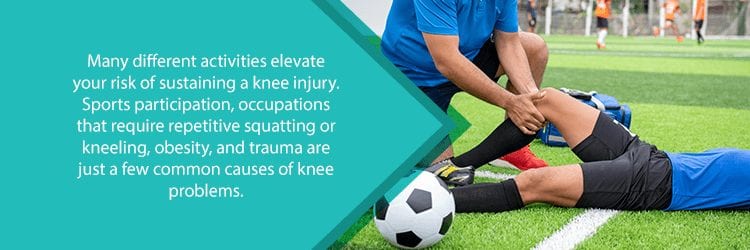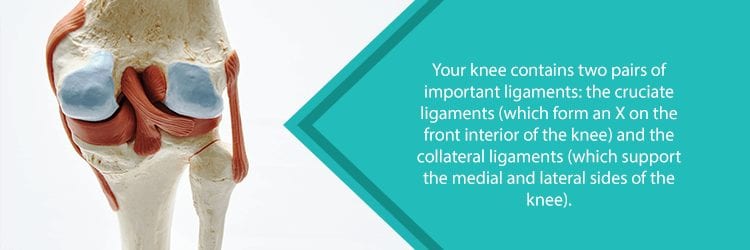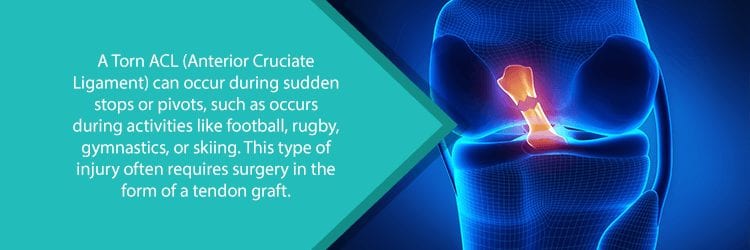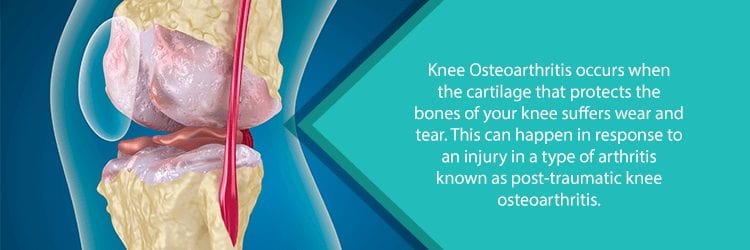Many people don’t realize how important the knee joint is to their everyday lives until they injure it. After all, the knee enables us to walk, sit, stand, and run. When you suffer a knee injury, it can limit your ability to perform even simple tasks.
But, why is the knee so vulnerable to injury? And, what types of treatments do doctors at NJ Spine and Ortho prescribe to resolve these injuries? Browse this handy guide to find out.
Understanding Your Knee
The knee is the largest and strongest joint in the body. It connects the tibia (shinbone), femur (thighbone), and patella (kneecap). Rubbery tendons connect the knee bones to muscles, thus allowing for movement. In addition, ligaments connect the bones to each other, delivering stability to the joint. Cartilage between the knee bones, known as menisci, helps to absorb any shock while you walk, run, or engage in physical activities. In addition, synovial fluid keeps the joints lubricated, reducing the friction of moving bones.
While all these parts of the knee can be very effective in keeping it healthy and stable, sometimes injuries do occur. Both active and sedentary individuals can experience knee problems. Therefore, we must be mindful of our movements and ways to keep the knee healthy.

What Puts You at Risk for Knee Injuries?
By understanding some of the common causes of knee injuries, you may be able to prevent some painful (and possibly debilitating) conditions. Here are some risks that you need to be aware of if you want to protect your knees:
- Sports Participation: Physical activity is a great way to keep the knee healthy and strong. Unfortunately, some sports put your knee at greater risk for injury. Those who participate in sports requiring sudden changes in direction like soccer, football, basketball, or wrestling may put their knees at risk. In addition, runners, cyclists, and athletes who perform lots of jumping and landing activities can develop inflammation in the knee.
- Occupations: Just like participating in sports, repetitive movements at your job—like squatting or kneeling—may put you at a higher risk for developing knee conditions.
- Falling or Trauma: Those who slip and fall or who are involved in car accidents may suffer knee fractures and dislocations. Sometimes these injuries are unavoidable. But, by taking proper precautions and safety measures, you may be less likely to suffer knee trauma.
- Being Overweight or Obese: Excess weight puts more stress on your knee joints. In time, even simple activities like walking or climbing the stairs can cause injury.
- Poor Muscle Strength & Flexibility: Weak or tight muscles prevent your knee joint from working effectively.
- Genetics & Family History: Some people are more prone to conditions like osteoarthritis, which puts the knee at greater risk for injury. In addition, some individuals are born with extra joint space making the knee less stable.
- Previous Injuries: Once you suffer a knee injury, the knee becomes compromised and more likely to sustain future injuries.
Common Knee Injuries
Here are some of the most common types of knee injuries that affect athletes and non-athletes alike:
Knee Sprains
A very common knee injury involves the ligaments that connect the upper and lower leg bones. When these ligaments become overstretched, it can lead to pain, swelling, or instability of the knee. There are two types of ligaments in the knee:
- Cruciate Ligaments: These ligaments cross each other and form an “X” on the inside of the knee. They are responsible for the back and forth moments of the lower leg. These ligaments are called the ACL (anterior cruciate ligament) and PCL (posterior cruciate ligament).
- Collateral Ligaments These ligaments are located on the sides of the knee. They help stabilize the knee when we perform unusual movements, such as making contact during sports. In addition, they control the sideways motion of the knee. These two ligaments are known as the medial collateral ligament (MCL) and lateral collateral ligament (LCL).
Knee sprains are often caused by landing incorrectly while stepping or by contact injuries. Treating minor sprains involves the RICE method: Rest, ice, gentle compression, and elevation. More serious sprains can cause the ligament to become loose, compromising the stability of the knee. It may feel like your knee is about to “give out” while walking or doing other activities.

Ligament Tears
A severe sprain of the knee ligaments can result in a tear. A ligament tear can be a very serious and painful condition.
Types of knee ligament tears include:
- Anterior Cruciate Ligament (ACL) Tears: This injury usually occurs during sudden stops, pivoting, and changes of direction. In addition, an impact to the outside of the knee or lower leg can cause a tear. Those who participate in football, rugby, gymnastics, and skiing often experience ACL tears.
- Posterior Cruciate Ligament (PCL) Tears: Physical activities also play a role in PCL tears. When someone lands hard on a bent leg or suffers a direct impact to the front of the knee, they suffer a PCL tear.
- Medial Collateral Ligament (MCL) Tears: A fall or sideways blow that twists the lower leg outward can result in an MCL tear.
- Lateral Collateral Ligament (LCL) Tears. This injury occurs from an impact to the inside of the knee. It is relatively rare compared to other knee ligament tears because the opposite leg usually shields from this type of trauma.
A complete tear to the ligament requires medical care. In many cases, this requires extensive physical therapy to keep swelling down, manage pain, and restore your knee strength and range of motion. A knee brace can help knee stable. In addition, you may have to use crutches to avoid putting any weight on the injured knee while healing.
Surgery may be necessary for some knee ligament tears. This usually involves removing the damaged ligament and replacing it with a segment of a tendon—a process known as a graft. Recovery times can take up to a year depending on your situation.

Patellar Tendinitis
Commonly known as Jumper’s Knee, this injury of overuse affects the patella tendon. This tendon is found below the knee cap and attaches to the shin bone. Patellar tendonitis commonly affects athletes who participate in track and field, basketball, volleyball, dancing, and gymnastics. Why? Excessive jumping and landing strain the patellar tendon. Over time, the damage gradually becomes worse, causing pain and dysfunction to the knee.
This inflammation of the patellar tendon can be treated with the RICE method as well as nonsteroidal anti-inflammatory medications (or NSAIDs). In addition, rehabilitative therapy can stretch and strengthen the area. Many athletes consult with special trainers to help them understand how their movements affect the knee. From there, they can make modifications to the way they exercise to protect the knee in the future.
Meniscal Tears
Another very common knee injury involves a tear to the cartilage between the thigh bone and shin bone. Athletes suffer meniscal tears from impacts to the knee and turning the knee the wrong way while squatting. In addition, older adults may suffer from these tears because the cartilage wears out and weakens over time. Even simple movements, like getting up from a chair, can cause a compromised meniscus to tear.
Treating meniscal tears usually involves the RICE method and NSAIDs. In more severe cases, a minimally invasive knee arthroscopy can trim or repair the tear. After the procedure, rehabilitation exercises will restore knee mobility and strength.
Knee Fractures & Dislocations
A bad fall or trauma to the knee can cause your patella (kneecap) to crack. In addition, it may cause the patella to shift out of its normal position. These can be very painful injuries that may make it difficult to walk or move the knee.
Treatment varies depending on the severity of the fracture. Simple fractures may only require a cast or splint to keep your knee in place at it heals. If the fracture is more complicated or the kneecap slips out of place, then a knee replacement surgery may be necessary.
Post Traumatic Knee Osteoarthritis
If you suffered a previous knee injury, then your knee may be prone to developing osteoarthritis. This condition, known as post-traumatic knee osteoarthritis, can occur decades after a knee injury or surgery. While this may not be the only cause for your osteoarthritis, those who suffer a knee injury may be up to 4 times more likely to develop this condition.
Treatment depends on the severity of your symptoms. However, adaptive equipment and medications may help with pain management and overall functioning. If your knee osteoarthritis is severe, steroid injections or knee replacement surgery may be necessary.

Ready to Get Help for Your Knee Injuries?
You don’t want a knee injury to keep you from doing the things you love. This is especially true if you are an athlete who thrives on the thrill of competition. Who wants to be a benchwarmer any longer than necessary?
NJ Spine and Orthopedic provides both conservative and surgical care for knee injuries. From receiving an accurate diagnosis to undergoing a knee ligament or fracture repair, our team will guide you along every step of your treatment. Using the latest technology and treatment options, we will ensure that you recover from your knee injury so that you can get back to doing what you love most.
You know that you’re itching to get back on the field or court. Why not call us today at (855) 586-2615 for a consultation?

